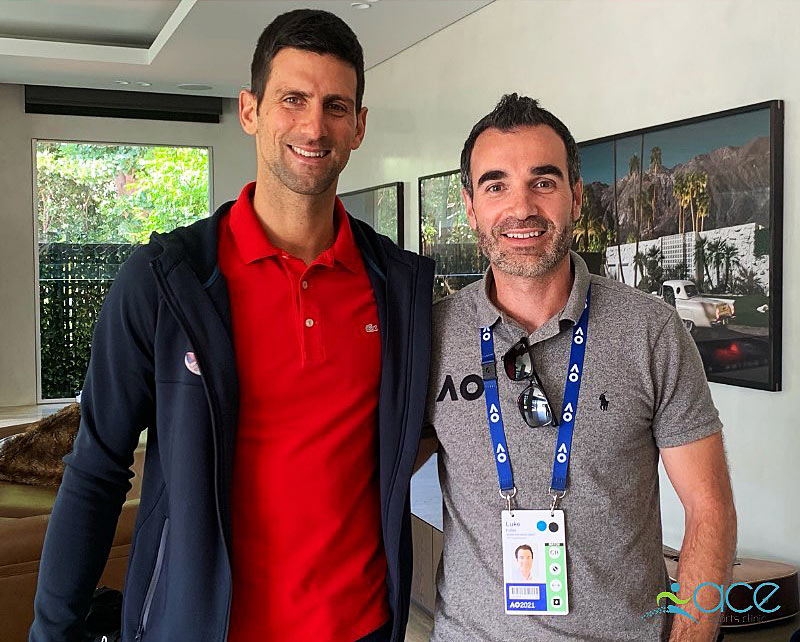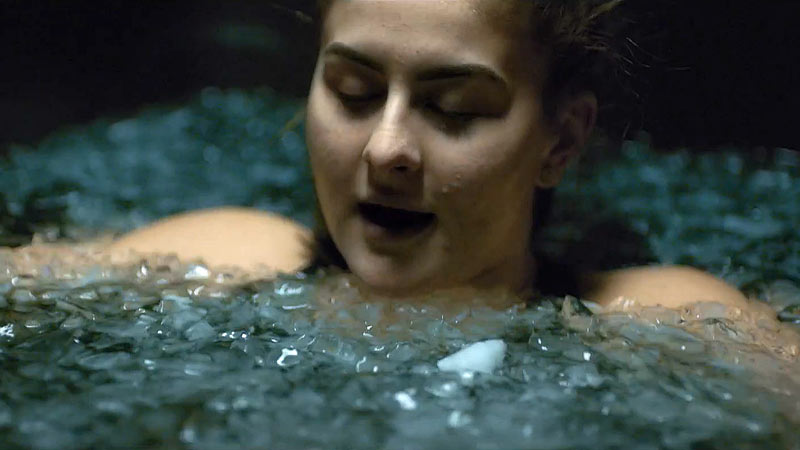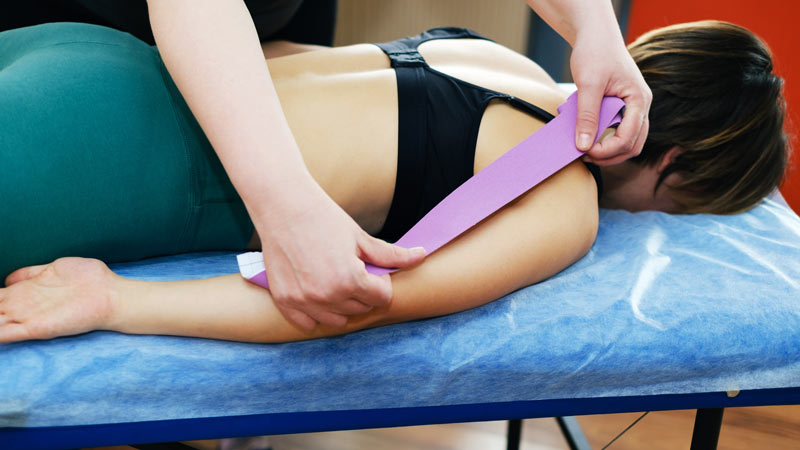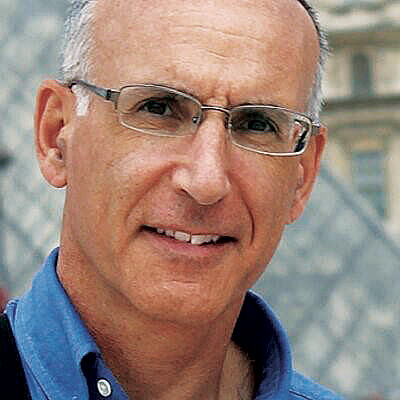I recently caught up with ATP Tour Physiotherapist and Osteopath Luke Fuller via Zoom, as he was getting ready to help players at the ATP Cup and the Australian Open in Melbourne.
Luke is co-founder of ACE Sports Clinics in Toronto and Oakville, Ontario, but was in his hometown of Melbourne getting ready for the Open. With dozens of players finishing up a two-week Covid-19 quarantine in their hotel rooms, Luke was bracing himself for an onslaught of aches and injuries.

Ace Sports Clinics Luke Fuller with Novak Djokovic at the Australian Open.
Luke has worked as an ATP physiotherapist since 2010. He’s one of a team of up to 15 professionals who take care of tour players. Their services range from pre-match stretching and preparation to dealing with injuries and of course, racing onto the court for an injury time-out during a match.
Luke said part of the joy of his job is getting to know the players. Each one is different, with individual preferences in how they prepare, train, tolerate pain, and take care of their bodies.
But the top players stand out, Luke says, at how disciplined they are with their recovery habits.
“I remember one player at the Shanghai Masters. I think it was a quarter-final match and he finished well after midnight,” Luke said. “The place was deserted by then. But he just did his regular recovery routine—hydration, massage, treatments, etc.—as if it were three in the afternoon, not three in the morning. He ended up winning the tournament.”
“I think that’s what separates the best players from the rest. It’s that willingness to follow their recovery regimen regardless of injury, temperature, or how many sets they’ve played. They don’t cut corners,” Luke said.
So, what are some of the steps top pros take to recover?
Luke tends to Juan Martin Del Potro during an injury timeout.
The Post-Match Routine
The first stop off the court is probably a “warm-down” where players spend ten minutes doing some light cycling on a stationary bike. This type of warm down is better than full rest to recover from muscle soreness. It gets the blood flowing to your sore muscles to deliver oxygen and nutrients needed for repair. And it actually strengthens your muscle fibers more than resting.
Players will also be rehydrating with a combination of electrolyte and glucose drinks. Getting sodium (salt) and other electrolytes helps your body absorb and retain water better. And it helps reduce the risk of cramping and heat exhaustion.
The warm down is often followed by some active stretching, either alone or from an ATP physiotherapist. Followed by a hot shower, to relax muscles.
Right after that – ideally, within 45 minutes of coming off the court - players will eat a snack – usually a mixture of carbs and protein. The carbs replenish the glycogen reserves that your body needs for energy. Protein provides amino acids to help rebuild muscle tissue that’s been broken down by strenuous activity.
Some players love snacking on sushi after a match, since it provides a good combination of protein and carbs (fish and rice). Andy Murray reportedly scarfs down up to 50 pieces of sushi. It’s one of Serena William’s post-match favourites, too.
However, it’s worth noting that an ordinary banana has roughly as many grams of carbs as a fancy recovery drink. And studies show that chocolate milk is one of the best recovery drinks—providing a balance of carbs, protein, fats and electrolytes.
In the middle of all this recovery, top ATP players will often have to meet with the media and do interviews. Luke and his teammates work closely with ATP officials to coordinate these interruptions.
Then, it’s back to the treatment room. At this point, some players may opt to use cold hydrotherapies such as an ice bath. Five to ten minutes in an ice bath can reduce swelling, decrease muscle soreness (DOMS), and speed up recovery. But it’s clearly an acquired taste. “It’s basically by preference,“ Luke says. “An ice bath constricts blood vessels and reduces any swelling. It can be good for any type of pain. And after a long match, there’s a lot of that.”

Brrrr! Bianca helps her body recover with an ice bath.
While the average recreational or age group player may not have access to an ice bath, there are some things we can do to approximate the benefits.
Luke recommends the use of ice towels. “These can be critical on hot days. It’s basically a wet towel with ice cubes in the middle and the ends of the towel twisted or taped off. When placed around the neck, under the arm pit, or on the top of the thighs near major blood vessels, ice towels can help lower your body temperature, reduce fatigue, and prevent cramping or heat stroke.”
On hot days, Luke and his colleagues will prepare ice towels for the players and place them near the umpire’s chair. They’re so important that Luke tells the ball boys and umpire to remind players to use them. Because by the time a player is feeling a little lightheaded from the heat, it’s too late.
“I think for the average player, having an ice towel is cheap and effective. Even if you sit down for a moment and you have it on, it does make a big difference and helps cool your body,” Luke said.
There’s another type of cold hydrotherapy that’s available to the average player—contrast showers. This is where you start off with a hot shower and gradually reduce the temperature until it’s cold water. Then repeat.
The hot water dilates (widens) blood vessels while the cold water constricts blood vessels. Alternating between hot and cold mimics the muscle pumping action of the body—reducing inflammation and removing metabolic wastes from muscles.
After cold hydrotherapy, an ATP pro may finish with a massage for 45-60 minutes. This further loosens up tight muscles, helps get rid of lactic acid build-up in the muscles, and improves range of motion. The average player can get similar benefits by using foam rollers or hand-held rolling devices.
Finally, the player might sit down and eat a full meal and continue to hydrate.
“Nothing up my sleeve.” Milos Raonic sports an elbow sleeve to reduce pain, swelling and help speed recovery.
Advanced Techniques
Another recovery technique—available to the average player—is the use of compression clothing. You may have seen National Basketball stars and some tennis players wear compression shorts or elbow sleeves (Milos Raonic).
The jury is still out whether compression clothing improves performance. But there’s plenty of research that shows it can reduce pain, swelling, and help speed recovery.
Many ATP players will put them on after a match, Luke says. Some players will wear them at night while they sleep, especially if they have an injury.
“Players may finish a tournament and have to rush to the airport and fly six hours or more to their next tournament,” Luke said. “Once they land, they’ll check into their hotel and go straight to the gym or practice court. So, they’ll often wear compression garments to minimize the effects of flying.”
Lately, Luke and his colleagues have started using a new technology called compression boots. Compression boots are like giant inflatable galoshes that stretch from your toes to your hips and have attachments for your arms or lower back. Players sit on a table while these boots inflate and “pulse” with compressions to pump blood and fluids back toward the heart. Early research shows compression boots may reduce lactic acid build-up in muscles, reduce fatigue, soreness, and improve recovery.

Kinsio-tape can help during AND after a match.
Luke also uses kinesiology tape for recovery. We’ve all seen players on TV with odd-shaped patterns of Kinsio-tape on their shoulders, knees, stomach, and back. Kinesio-tape has the ability to “confuse” the nerves that send pain signals to your brain, thus reducing the pain you may feel from a muscle pull or injury.
But Luke uses Kinesio-tape differently after a match, to help with lymphatic drainage and to reduce swelling in an area.
Finally, there’s a good night’s sleep. “Sleep is still the number one method of recovery for the human body. So prioritizing sleep gives you benefits for muscle repair, benefits to the nervous and immune system, better cognition, and better decision-making,” Luke said.
As you can see, the entire post-match recovery process can take hours. It keeps Luke and his colleagues busy—and recovery is only one part of their job. Players come to him for pre-match stretching, taping, exercise prescription, and injury relief. He’s literally on-call 24/7 during a tournament. He has to be ready to run onto the court for an injury time-out, or to treat a player off-court at any time.
His days can stretch from 8 a.m. to well past midnight. But the rewards come from getting to know players on an individual level and seeing them triumph on court when it looked like they could barely move.
“It’s really amazing what they go through,” Luke said. “The media and the fans know one story, but sometimes there’s a deeper story. Many times, especially late in the season, nearly every player is playing with some sort of discomfort or injury. I think what some players go through, the mental strength and determination to get the job done, day in and day out, is really phenomenal.”
In a normal year (pre-Covid), Luke would travel to 20 or more ATP tournaments around the world. Now, with the tournament schedule vastly reduced and concentrated in a few locations, he’s spending more time in his native Australia. He’s just opened a third ACE Sports Clinic in Melbourne, together with the clinics he runs in Toronto and Oakville with Cristian Ganea.
“It’s called a sports clinic, but we don’t just treat athletes or sports people. We see a lot of people who want to improve their health and fitness.”
“We’re really big on collaboration and teamwork, because we find that a lot of clinics just aren’t doing it,” Luke said. “They’ve got different services, but they’re really in different rooms and barely know what each other does. So, we’re trying to break down those barriers between different professions – physio, chiropractic, osteopathy, massage, kinesiology – and get them working together in the best interest of the client.”
“A lot of the time we’re detectives. It’s one thing to put ice on an elbow and help it feel better. But then the injury comes back. You’ve got to get at the root cause of the injury and show people how they can actually improve and strengthen, rather than just put out a fire. That’s what leads to lasting change.”
